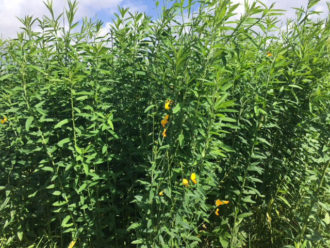Cover crops are crops grown to improve the farming system. Cover crops can improve the physical, chemical and biological properties of the soil, supply nitrogen, reduce leaching of nutrients and pesticides, reduce erosion, mitigate damage from plant pests and/or reduce their population densities, and attract beneficial insects. Cover crops can also generate additional income when grown for seed or as an energy crop. While it is difficult to achieve all of the listed benefits with one crop, producers should select cover crops that offer multiple benefits at once. Producers should also consider potential drawbacks before deciding to include a cover crop. In some instances, the cover crop can require additional labor and expense, delay crop planting, or serve as an alternate host to crop insects or diseases.
• Not compete with the vegetable crop and perform well during episodes of drought or flooding and under various other adverse environmental conditions.
Prioritizing objectives for cover crops necessitates an understanding of when and under what conditions benefits can occur. Some benefits occur during cover crop growth, while other benefits occur after cover crop termination. Generally, benefits are only fully realized with a robust stand of cover crop. A wide variety of cover crop species and management options are available to fit a farm operation.
University of Florida IFAS Extension developed a three-part fact sheet series for producers interested in integrating cover crops into their vegetable production systems.
Annual Cover Crops in Florida Vegetable Systems Part 1: Why grow cover crops?
Annual Cover Crops in Florida Vegetable Systems Part 2: Production
Annual Cover Crops in Florida Vegetable Systems Part 3: Buying and Sourcing
Want more information? See the related SARE grant:
This material is based upon work that is supported by the National Institute of Food and Agriculture, U.S. Department of Agriculture through the Sustainable Agriculture Research and Education (SARE) program. Any opinions, findings, conclusions, or recommendations expressed in this publication are those of the author(s) and should not be construed to represent any official USDA or U.S. Government determination or policy.
